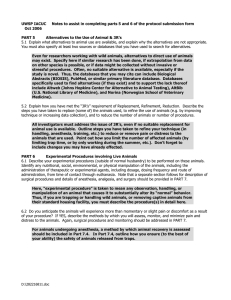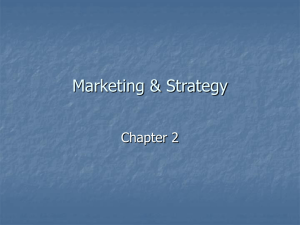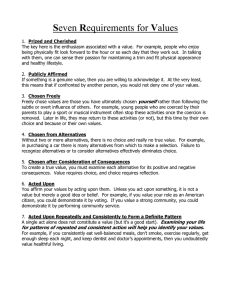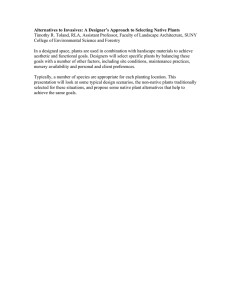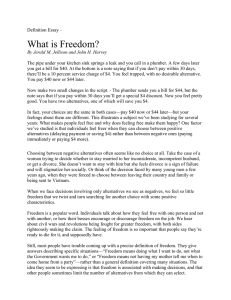THE 3RS OF ALTERNATIVES
advertisement
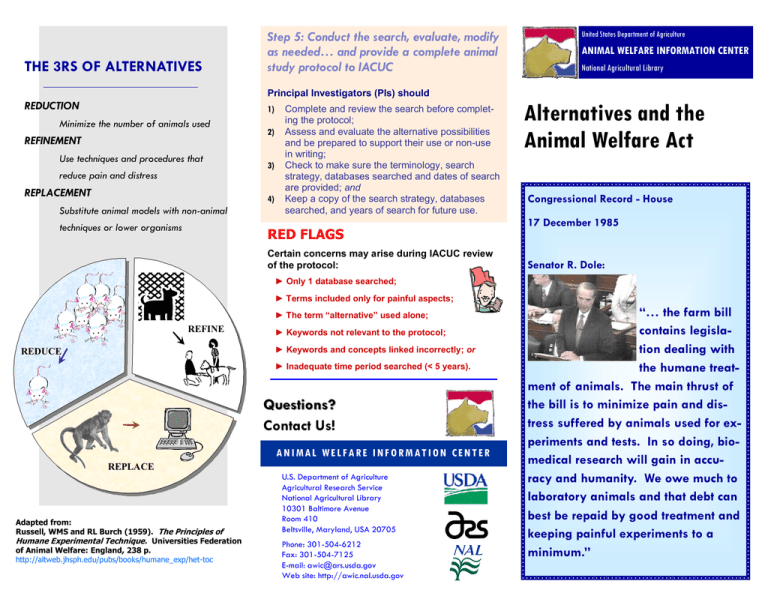
THE 3RS OF ALTERNATIVES Step 5: Conduct the search, evaluate, modify as needed… and provide a complete animal study protocol to IACUC United States Department of Agriculture ANIMAL WELFARE INFORMATION CENTER National Agricultural Library Principal Investigators (PIs) should REDUCTION 1) Minimize the number of animals used REFINEMENT Use techniques and procedures that reduce pain and distress REPLACEMENT 2) 3) 4) Substitute animal models with non-animal techniques or lower organisms Complete and review the search before completing the protocol; Assess and evaluate the alternative possibilities and be prepared to support their use or non-use in writing; Check to make sure the terminology, search strategy, databases searched and dates of search are provided; and Keep a copy of the search strategy, databases searched, and years of search for future use. RED FLAGS Certain concerns may arise during IACUC review of the protocol: Alternatives and the Animal Welfare Act Congressional Record - House 17 December 1985 Senator R. Dole: ► Only 1 database searched; ► Terms included only for painful aspects; ► The term “alternative” used alone; REFINE ► Keywords not relevant to the protocol; ► Keywords and concepts linked incorrectly; or REDUCE ► Inadequate time period searched (< 5 years). Questions? Contact Us! ANIMAL WELFARE INFORMATION CENTER REPLACE Adapted from: Russell, WMS and RL Burch (1959). The Principles of Humane Experimental Technique. Universities Federation of Animal Welfare: England, 238 p. http://altweb.jhsph.edu/pubs/books/humane_exp/het-toc U.S. Department of Agriculture Agricultural Research Service National Agricultural Library 10301 Baltimore Avenue Room 410 Beltsville, Maryland, USA 20705 Phone: 301-504-6212 Fax: 301-504-7125 E-mail: awic@ars.usda.gov Web site: http://awic.nal.usda.gov “… the farm bill contains legislation dealing with the humane treatment of animals. The main thrust of the bill is to minimize pain and distress suffered by animals used for experiments and tests. In so doing, biomedical research will gain in accuracy and humanity. We owe much to laboratory animals and that debt can best be repaid by good treatment and keeping painful experiments to a minimum.” Conducting Literature Searches: Addressing the Search for Alternatives Step 1: Understand the legislation and regulatory intent Improved Standards for Laboratory Animals Act Food Security Act of 1985 Subtitle F, Animal Welfare, Public Law 99-198 Sec.2143 (a)(3): “…the standards…shall, with respect to animals in research facilities, include requirements(A) for animal care, treatment, and practices in experimental procedures to ensure that animal pain and distress are minimized…; (B) that the principal investigator considers alternatives to any procedure likely to produce pain or distress in an experimental animals…” Information Requirements of the Animal Welfare Act Code of Federal Regulations Title 9, Chapter 1, Subtitle A, Animal Welfare Sec. 2.31(d): “…the IACUC shall determine that… (ii) The principal investigator has considered alternatives to procedures that may cause more than momentary or slight pain or distress to the animals, and has provided a written narrative description of the methods and sources, e.g. the Animal Welfare Information Center, used to determine that alternatives were not available; (iii) The principal investigator has provided written assurance that the activities do not unnecessarily duplicate previous experiments…” Consideration of Alternatives to Painful/Distress Procedures USDA/APHIS/Animal Care Policy #12 “..APHIS continues to recommend a database search as the most effective and efficient method for demonstrating compliance with the requirement to consider alternatives to painful/distressful procedures.” Step 2: Familiarize yourself with the protocol Gather information about : - the area of study, including species and organ systems, - important acronyms and international spellings, - names of hormones, enzymes, CAS#, trade names, - prominent authors in the field including the investigator, - knowledge of possible alternatives, and - previous searches, including keywords used. Step 3: Formulate a search strategy Phase 1 – Reduction and Refinement Provides a comprehensive view of the field of study, including techniques and common species used, and may address unnecessary duplication. Keyword Examples analgesic or painkiller or sedative anesthesia or anaesthesia or anasthesia housing or facility or caging or management welfare or well-being or pain or distress technique or procedure or method or assay Phase 2 – Replacement Addresses potential alternatives such as cell or tissue culture, models, simulations, animals lower on the phylogenetic scale, plants, etc. Keyword Examples vitro or culture or artificial tissue or cell or organ virtual or simulation or digital or interactive fish or mollusk or cephalopod * Consider synonyms, alternate spellings and variations of the words (such as tenses). Pharmaceutical and Technological ▪ Ei Compendex (file 8) ▪ Gale Group Computer Database (file 275) ▪ INSPEC (file 2) ▪ International Pharmaceutical Abstracts (file 74) ▪ Pharmaceutical News Index (file 42) ▪ Japanese Science and Technology (J-EAST): http://sciencelinks.jp/j-east/ Federally-Funded Research ▪ CRIS: http://cris.nifa.usda.gov ▪ NIH RePORTER: http://projectreporter.nih.gov/reporter.cfm ▪ NTIS-National Technical Information Service (file 6) ▪ FEDRIP - Federal Research in Progress (file 266) Education ▪ ERIC (file 1): http://www.eric.ed.gov/ ▪ HSVMA: http://alted.hsvma.org/ ▪ EURCA: http://www.eurca.org/ ▪ Norwegian Reference Centre for Laboratory Animal Science & Alternatives (NORINA) http://oslovet.veths.no/NORINA http://oslovet.veths.no/teaching/materials.html http://oslovet.veths.no/textbase/ Law and Legislation Step 4: Select appropriate databases In this list of databases, file numbers are included for those databases searchable in Dialog. Biomedical and Biological ▪ AGRICOLA (file 10): http://agricola.nal.usda.gov ▪ Aquatic Sciences and Fisheries Abstracts (file 44) ▪ BIOSIS (file 5) ▪ CAB (file 50) ▪ Current Contents (file 440) ▪ EMBASE (file 73) ▪ Life Sciences ▪ MEDLINE (file 155): http://www.ncbi.nlm.nih.gov/pubmed ▪ Pascal (file 144) ▪ PsycINFO (file 11) ▪ SciSearch (file 434) ▪ TOXLINE (file 156) ▪ Zoological Record (file 185) ▪ Scopus and ScienceDirect ▪ Web of Science ▪ GPO’s Federal Digital System (FDsys): http://fdsys.gpo.gov ▪ LexisNexis: http://www.lexisnexis.com ▪ Thomas: http://thomas.loc.gov Additional Web-Based Resources ▪ Altweb: http://altweb.jhsph.edu ▪ Defense Technical Information Center: http://multisearch.deepwebaccess.com/multisearch/ ▪ NC3Rs: http://www.nc3rs.org.uk ▪ AWI Enrichment & Refinements Databases: http://www.awionline.org/ht/d/sp/i/11590/pid/11590 ▪ Scirus: http://www.scirus.com ▪ ICCVAM: http://iccvam.niehs.nih.gov ▪ ECVAM: http://ecvam.jrc.ec.europa.eu/ ▪ See more links on AWIC’s Alternatives pages: http://awic.nal.usda.gov/alternatives WHAT’S NEXT?
